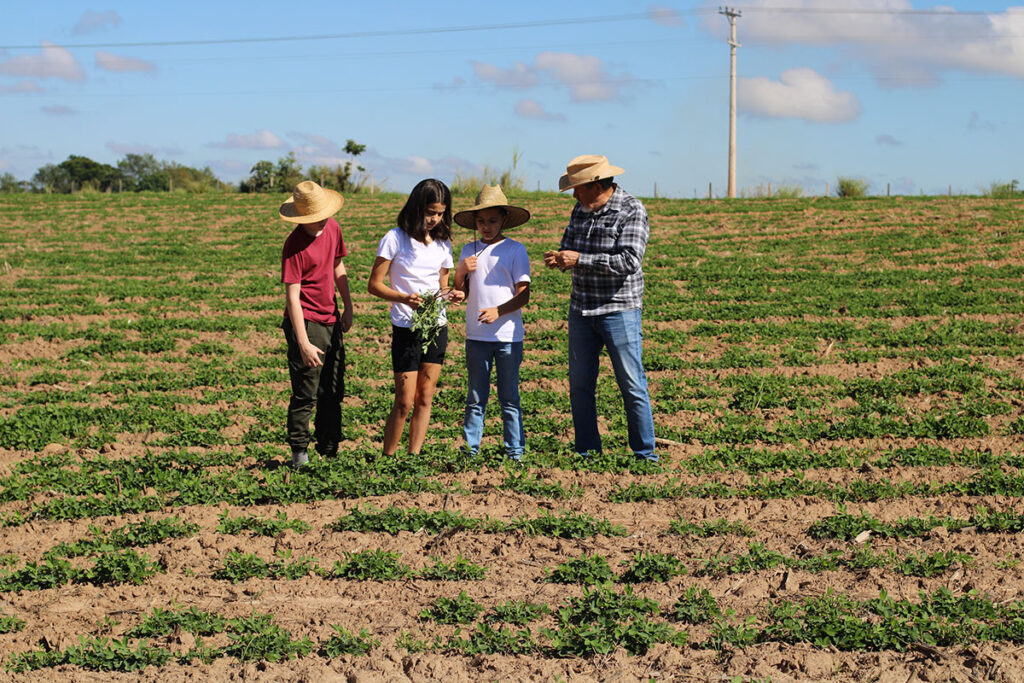This unit begins by engaging students with the phenomenon of food shortages. Students figure out what plants need to grow well and how environmental conditions affect food growth, leading to wonders around food and food shortages. Students investigate who is affected by changes in food availability, with opportunities to share and explore their own food traditions.
These wonders lead to investigation into our food system. Students learn about the people and processes involved in growing and making food. They also investigate how the food system is affected by and contributes to climate change. Students explore solutions to reduce the amount of greenhouse gases released by the food system, including what growers, school communities, and individuals can do. The unit culminates with students developing an action plan to address one or more aspects of our food system.

“My kids have said, ‘Oh good, I like doing this,’ when we were starting the lesson each day. It’s a great topic. I also think it has made them more curious and do their own research.”
“This did a great job of piquing students’ interest and sparking opposing points of view, which created lively discussions on the topic.”
“Students were curious and continue to be curious. They are more aware of their surroundings than before and continue to point out observations daily.”
“WOW! What incredible and engaging lessons to do with my students. They loved this opportunity to be scientists, explore and think about the food they eat, and I loved the ways that they began to model. I am so excited about these lessons and cannot wait to share them with my coworkers.”
“I love how the data was more interactive and chunked into smaller pieces. I also like how there was a way to bring all the knowledge and wondering back to come up with a conclusion to the problem.”
“Students really wanted to share their food traditions and look into how climate change might affect their food traditions.”
“What I find interesting is that students are discussing the material outside of class time. I heard students discussing the ideas before class in the hallways and even during lunch periods.”
“This is engaging because it uses real data about the state students live in and shows changes within their lifetime, like the rise of warehouses and trucking during the pandemic.”
“Every lesson was so thoroughly designed, the case study design book was beautifully organized, and it helped to give my class a real-life understanding of how college/graduate-level academic research works. Being able to connect their research back to environmental issues they actually experience was simply icing on the cake. Well done!”
“The kids become more engaged because now they are actually actively doing things. They’re really having to look for themselves. It’s not given to them on a platter, but all the resources are right there.”
“They’ve never thought about stuff like this before, and now they’re sharing it. One girl said this was the only class that she went home and talked to her parents about.”
“I am so amazed and impressed by the depth of resources that you embedded in the teacher guide. This is really well put together.”

Margo Crabtree, Center for Ecoliteracy
Molly Rose Williams, Center for Ecoliteracy
Alexa Norstad, Center for Ecoliteracy
Karen Brown, Center for Ecoliteracy
Anna Babarinde, Sonoma COE
Chris Griesemer, California Science Project
Craig Strang, UC Berkeley
Ladie Malek, Development Editor
Matt Ellinger, Designer
Stacey Lane, Illustrator
Darin Newton, Curriculum Developer
Kim Parfitt, Science Educator
Michael Washburn, Seed Savers
Helena Sakiestewa Gonzales, Native Seeds/SEARCH
Jacqueline Elbing-Omania, Berkeley USD
Kristina Hemenover, Los Angeles USD
Renay Hill, French Gulch-Whiskeytown School
Chris Kyaw, Los Angeles USD
Vanessa Manzano, Redesigning Learning
Diane Renteria, Redesigning Learning
Fidela Robertson, Norwalk-La Mirada USD
Augustin Rodriguez, Dos Palos-Oro Loma JUSD
Veronica Serna, Los Angeles USD
Mike Watt, Petaluma City Schools